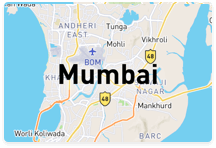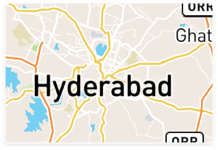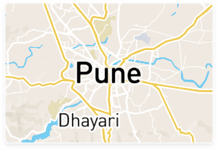Estimated Fees in India
₹ 500 to ₹ 600 per hour
Find Mridangam Classes Fees in your locality
I am a full-time Musician-Mridangist. I play mridangam for Vocal concerts/dance recitals/laya vinyasam. Works for a private institution as a mridangam teacher.
I am an experienced and qualified tutor with 15 years of experience. I take home classes and also prepare the students for instrumental examination at Annamalai University.
Butterfly Talent Academy (BTA), a unit of Butterfly Nurture Trust (R) is a registered trust, a non-profit organization, committed to education in Art, Music, Dance, Fitness and Theatre. BTA as an Art and Culture Foundation is mentored by professionals who tender to each individual’s level of learning. BTA attracts students spanning various ages, from Children to Adults taking their first step into Art, Music, Dance, Fitness and Theatre, and professionals who are keen to explore their talent to higher levels. BTA facilitates and nurtures its students in a structured way. It’s a System of Education, Curriculum based learning is followed up with Annual Exam and consistent Feedback. Associated with the best institutional bodies - Trinity London, Rabindra Bharati University, Karnataka State Board and International Taekwondo Federation (ITF). Founded by Mr. Mukesh Kodandaramaiah, a Theatre and Music enthusiast and Mr. Satish Kumar a passionate Guitarist, this academy was established in Bangalore in 2009. "Quitting fancy corporate jobs was challenge; we have enjoyed every bit of it. With a team of 30 plus trainers and 400 plus members we have a huge responsibility .We dream to make BTA Bangalore's Best Fine Art Academy. We surely have a long journey ahead, Join our journey"
WeGotGuru is a Music and Art school near Bellandur on Haralur Road. We teach Western, North and South Indian music. Vocal and Instruments. We conduct Trinity certification at our school in Sarjapur road. We also have a state of the art Studio where we do audio and video recordings. We are located off Sarjapura road, on Haralur road in Shubh Enclave layout. We are also easily approachable from HSR layout, Kudlu, Belandur, Marathahalli, Kasavanahalli, Kaikondrahalli, Electronic city, Ibblur etc. We have dozens of tutors all very experienced in their fields. They include some of the best in Bangalore. We also teach for various certifications and exams like State exams for Indian music. And the Trinity College, London or Associated Board of the Royal Schools of Music, London, for Western music. We teach all these classes: Carnatic vocal classes, Hindustani vocal classes, Western vocal classes, Karaoke classes, Classical guitar classes, Acoustic guitar classes, Electric guitar classes, Western and Indian Violin classes, Piano classes(acoustic and digital), Keyboard classes, Western classes, Hindustani and Carnatic flute classes, Tabla classes, Mridangam classes, Drums Classes, Music classes for young kids, Recording, Music production and programming, Video editing, Graphic design etc.
We are provide Classes for :- Carnatic Vocal Music Hindustani Vocal Music Western Music Instruments (Guitar & Keyboard) Carnatic & Hindustani Instruments (Flute, Mrudangam, Tabla, Violin & Veena) Bharatnatyam Dance Classes Kuchipudi Dance classes Kathak Dance classes Yoga Classes Painting Classes Naadapriya – The Music and Dance Institute is an endeavor to promote formal learning of Western and Indian styles of music, Indian style dance forms, Yoga and Painting etc.. The institute, with a strong and experienced team of teachers, offers regular classes as well as online classes. Their comprehensive curriculum is contemporary in its content and approach. The sole mission at the Naadapriya institute is to preserve and enhance the best traditions in our rich and varied musical heritage by providing a comprehensive music program that serves the educational and artistic needs of the community, state, region and beyond.
Post your Learning Need
Get customized quotes and responses from Tutors
Choose & Learn from Tutor of your choice

No data available

No data available

No data available

No data available

No data available

₹ 500 to ₹ 800
Answered 6 days ago Learn Music/Instrumental Music/Indian Instrumental Music/Mridangam

Bhuvnesh Dutt
"MUSIC TEACHER WITH MORE THAN 4 YEARS OF EXPERIENCE"
Pakhawaj and Mridangam are both ancient Indian percussion instruments, but they have distinct differences:
*Physical Differences:*
1. Shape: Pakhawaj - cylindrical, Mridangam - barrel-shaped
2. Size: Pakhawaj - typically longer (25-30 inches), Mridangam - shorter (22-25 inches)
3. Material: Both - wood or fiber, but Pakhawaj often has a thicker shell
*Sound Differences:*
1. Tone: Pakhawaj - deeper, more resonant, Mridangam - sharper, more crisp
2. Pitch: Pakhawaj - lower pitched, Mridangam - higher pitched
3. Sonic range: Pakhawaj - wider dynamic range
*Playing Style Differences:*
1. Stroke patterns: Pakhawaj - emphasizes bold, powerful strokes, Mridangam - intricate finger movements
2. Syllable patterns (bols): Pakhawaj - uses distinct bols, Mridangam - uses more complex bols
3. Technique: Pakhawaj - focuses on palm strokes, Mridangam - emphasizes finger strokes
*Cultural and Musical Differences:*
1. Tradition: Pakhawaj - associated with Hindustani classical, Mridangam - associated with Carnatic classical
2. Region: Pakhawaj - originated in North India, Mridangam - originated in South India
3. Musical context: Pakhawaj - often accompanies vocal and instrumental music, Mridangam - integral to Carnatic music ensembles
*Other Key Differences:*
1. Tuning: Pakhawaj - tuned to a specific pitch, Mridangam - tuned to multiple pitches
2. Head material: Pakhawaj - often uses goat skin, Mridangam - uses cow skin or synthetic materials
These differences reflect the unique characteristics and roles of each instrument in Indian classical music traditions.
read lessAnswered 6 days ago Learn Music/Instrumental Music/Indian Instrumental Music/Mridangam

Bhuvnesh Dutt
"MUSIC TEACHER WITH MORE THAN 4 YEARS OF EXPERIENCE"
Playing the mridangam poses technical, physical, and musical challenges:
Technical Challenges:
1. Complex finger movements and strokes
2. Intricate syllable patterns (bols)
3. Maintaining precise rhythm and timing
4. Mastering various tonal variations and dynamics
5. Coordinating left and right hand strokes
Physical Challenges:
1. Building finger strength, endurance, and dexterity
2. Developing calluses and protecting hands from injury
3. Maintaining proper posture and hand positioning
4. Managing fatigue during extended performances
Musical Challenges:
1. Understanding complex ragas and taal cycles
2. Developing musical expression and nuance
3. Improvising and responding to melodic instruments
4. Balancing accompaniment and solo playing
5. Adapting to different musical styles and genres
Practice and Performance Challenges:
1. Finding qualified teachers and guidance
2. Accessing quality instruments and maintenance
3. Overcoming stage fright and performance anxiety
4. Collaborating with other musicians and adapting to ensemble dynamics
Cultural and Traditional Challenges:
1. Preserving traditional playing styles and techniques
2. Innovating within established musical frameworks
3. Bridging cultural and generational gaps
4. Respecting lineage and guru-shishya parampara (teacher-student tradition)
By acknowledging these challenges, mridangam players can better prepare themselves for the dedication, hard work, and passion required to master this revered instrument.
read lessAnswered 6 days ago Learn Music/Instrumental Music/Indian Instrumental Music/Mridangam

Bhuvnesh Dutt
"MUSIC TEACHER WITH MORE THAN 4 YEARS OF EXPERIENCE"
Despite differences, these three iconic Indian percussion instruments share similarities:
*Commonalities:*
1. Hand-played: All three instruments are played with hands.
2. Double-headed: Each instrument has two heads, providing varied tonal possibilities.
3. Rhythmic foundation: All provide rhythmic foundation in Indian classical, folk, and fusion music.
4. Syllabic language: Each instrument uses unique syllables (bols) to create rhythmic patterns.
5. Complex fingerwork: Intricate finger movements and strokes create complex rhythms.
6. Cultural significance: Deeply rooted in Indian culture, mythology, and tradition.
7. Improvisation: All three instruments allow for spontaneous improvisation.
*Shared Techniques:*
1. Stroke patterns (e.g., thumb, index, middle finger strokes)
2. Finger independence and coordination
3. Palm strokes and heel-toe techniques
4. Articulation and tonal control
*Musical Contexts:*
1. Accompanying melodic instruments (e.g., sitar, flute)
2. Solo performances and percussion ensembles
3. Devotional and spiritual music
4. Folk and traditional music
*Shared Materials:*
1. Wooden shells (some modern variations use fiber or synthetic materials)
2. Animal skin or synthetic heads
*Unifying Spirit:*
1. Connecting people through rhythm and music
2. Preserving cultural heritage and traditions
3. Inspiring creativity and self-expression
These similarities highlight the shared essence and rich cultural significance of the dholak, mridangam, and tabla in Indian music and beyond.
read lessHave a question about Mridangam Classes Fees? Ask your question and get answers from top Tutors.
Create your FREE UrbanPro profile and grow your income!
Find best tutors for Mridangam Classes by posting a requirement.

Get started now, by booking a Free Demo Class